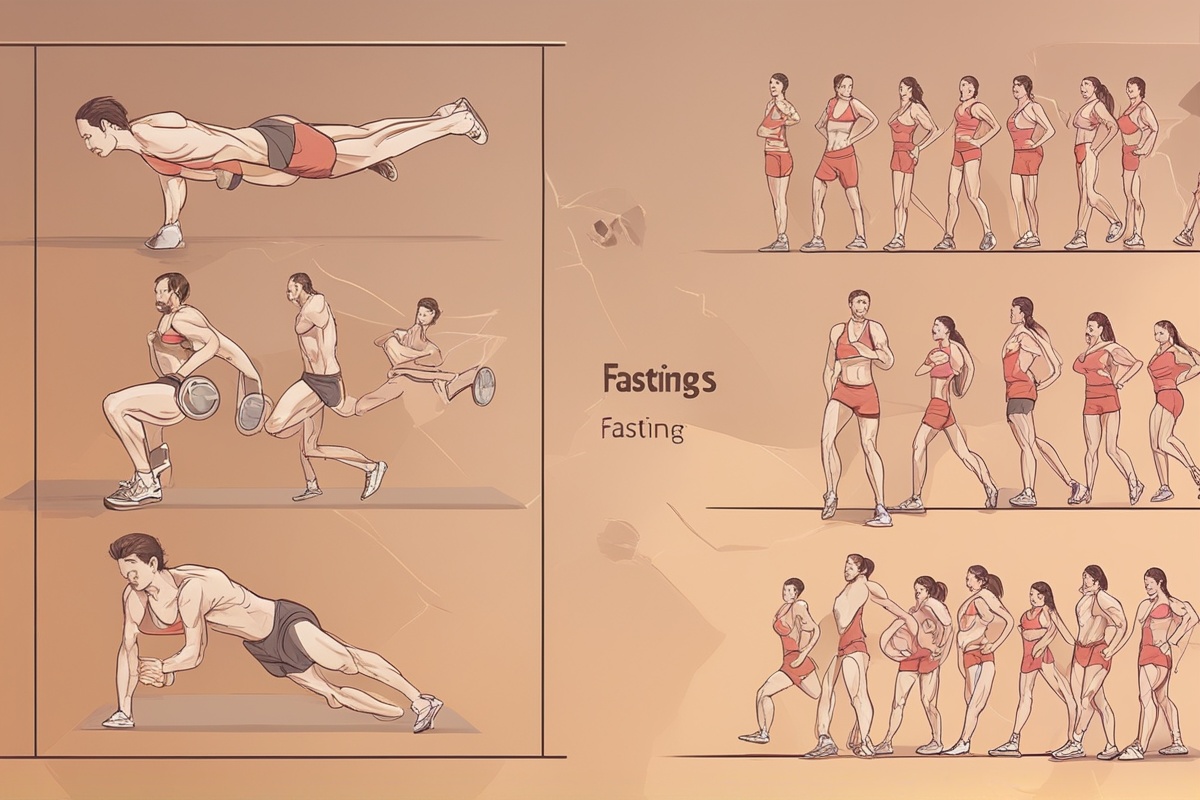Are you curious about how fasting exercise can transform your health and fitness journey? Combining fasting with physical activity is gaining popularity as a powerful strategy for weight loss, improved metabolism, and overall wellness. Whether you’re practicing intermittent fasting, extended fasts, or time-restricted eating, pairing it with exercise can amplify your results—if done correctly. In this post, we’ll dive deep into the science behind fasting and exercise, explore the benefits, and share actionable tips to help you integrate this dynamic duo into your lifestyle safely and effectively. Let’s get started on unlocking the potential of fasting workouts!
What Is Fasting Exercise, and Why Does It Matter?
Fasting exercise refers to engaging in physical activity while in a fasted state, meaning you haven’t consumed calories for a certain period, typically 12–16 hours or more. This could align with intermittent fasting schedules like the 16:8 method (16 hours fasting, 8 hours eating) or occur during longer fasts. The concept hinges on the body’s shift to burning stored energy, particularly fat, when glycogen reserves are low. But why does this combination matter? Research shows that exercising while fasting may enhance fat oxidation, improve insulin sensitivity, and even boost endurance over time. For those seeking weight loss or metabolic health, fasting workouts can be a game-changer when approached with care.
The Science Behind Fasting and Exercise
When you fast, your body undergoes significant metabolic changes. After depleting glycogen stores in your liver and muscles (usually within 12–24 hours), it begins to rely on fat as a primary fuel source through a process called ketosis. Pairing exercise with fasting can accelerate this shift, as physical activity further depletes glycogen and signals the body to tap into fat reserves. Studies, such as those published in the Journal of Applied Physiology, suggest that fasted training can increase fat-burning efficiency by up to 20% compared to exercising after eating. Additionally, fasting exercise may elevate levels of human growth hormone (HGH), which supports muscle repair and fat loss. However, the intensity and duration of exercise play a critical role in determining whether the benefits outweigh potential risks like muscle loss or fatigue.
Benefits of Combining Fasting and Exercise
The synergy of fasting and exercise offers a range of health perks that go beyond just shedding pounds. Here are some key advantages that make fasting fitness a compelling choice for many:
- Enhanced Fat Loss: Exercising in a fasted state can maximize fat burning as your body prioritizes stored energy over recently consumed calories.
- Improved Metabolic Flexibility: Regular fasted workouts train your body to switch efficiently between carb and fat metabolism, boosting overall energy efficiency.
- Better Insulin Sensitivity: Fasting and exercise together can lower blood sugar levels and improve how your body responds to insulin, reducing the risk of type 2 diabetes.
- Increased Mental Clarity: Many report heightened focus during fasted training, possibly due to elevated ketone levels, which serve as brain fuel.
Potential Risks and How to Mitigate Them
While the benefits of fasting exercise routines are enticing, it’s not without challenges. Exercising on an empty stomach can lead to dizziness, low energy, or even muscle breakdown if your body starts catabolizing protein for fuel. Overdoing it may also spike cortisol levels, leading to stress and potential weight gain. The key is to listen to your body and start slow. If you’re new to fasted training, begin with low-intensity activities like walking or yoga during your fasting window. Hydration is critical—drink plenty of water to avoid dehydration, especially since fasting can reduce fluid intake from food. Additionally, ensure you’re getting adequate protein and nutrients during your eating windows to support muscle recovery and prevent deficiencies.
Practical Tips for Incorporating Fasting Workouts
Ready to try fasting and fitness together? It doesn’t have to be complicated, but a thoughtful approach will help you avoid burnout and maximize results. Here are some practical strategies to make fasting exercise work for you:
- Start with Low-Intensity Exercise: Opt for walking, light jogging, or stretching during your first few fasted sessions to gauge how your body responds.
- Time Your Workouts Wisely: Schedule exercise near the end of your fasting window so you can refuel soon after, minimizing the risk of energy crashes.
- Stay Hydrated: Drink water or electrolyte-infused drinks (without calories) during fasting to maintain performance and prevent fatigue.
- Focus on Recovery: Prioritize sleep and nutrient-dense meals during eating windows to support muscle repair and energy replenishment.
- Listen to Your Body: If you feel weak or lightheaded during a fasted workout, stop and reassess—pushing too hard can do more harm than good.
Who Should Avoid Fasting Exercise?
While fasting exercise benefits many, it’s not suitable for everyone. Certain groups should approach this practice with caution or avoid it altogether. Pregnant or breastfeeding women, for instance, need consistent energy and nutrients for themselves and their babies, making fasting workouts risky. Individuals with a history of eating disorders may find fasting triggers unhealthy behaviors and should consult a professional before attempting it. Those with medical conditions like diabetes or low blood pressure should seek guidance from a healthcare provider, as fasted training can affect blood sugar and energy levels unpredictably. Always prioritize safety over trends—your health comes first.
In conclusion, combining fasting exercise into your routine can be a transformative approach to achieving your health and fitness goals. From enhanced fat loss to improved metabolic health, the science backs up the potential of fasted workouts when done thoughtfully. However, success lies in balance—start slow, stay hydrated, and pay attention to your body’s signals. Whether you’re a seasoned faster or just exploring intermittent fasting, integrating exercise can elevate your results and help you feel stronger, sharper, and more energized. Have you tried fasting and exercise together? Share your experiences or questions below—we’d love to hear how this powerful combo is working for you!






